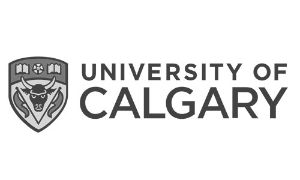Status of Non-native Vascular Plants
Summary of non-native vascular plant detections and species richness in Tolko's Southern Operating Area.
Status of non-native species in Tolko's Southern Operating Area:
Total number
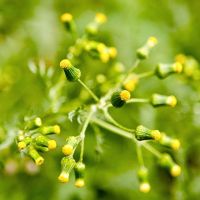
Per cent occurrence
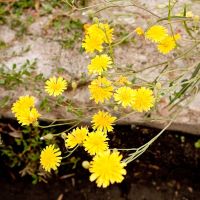
Species per site
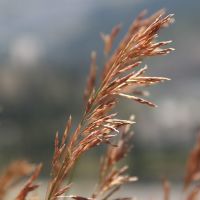
Noxious weeds
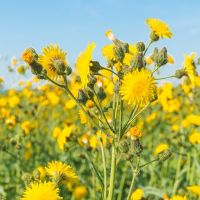
Introduction
Non-native plants are those species that have been introduced, intentionally or otherwise, into new areas beyond their natural range.
- While non-native plants are not a current threat to native biodiversity in boreal forests, they could become a bigger management challenge given the right conditions. For example, some non-native plant species, like Creeping Thistle and Annual Hawk’s Beard, can interfere with tree regeneration after fire or forest harvesting[1].
- As human activities such as forestry and oil and gas development increase in northern Alberta, creating favourable environmental conditions for weeds to establish and spread, non-native species like these could become more of a concern. Increasing temperatures and longer growing seasons are also creating more favourable conditions for non-native species, especially in the boreal region[2], and could increase their seed production[3].
- Early action is the most effective way of managing non-native species before serious impacts have occurred.
- One objective of the Forest Management Plan for the Southern Operating Area is to control non-native plant species in the region. To limit the establishment of spread of weeds, best management practices are used to limit soil disturbance, prevent the spread of weed fragments, and proactively address occurrences of noxious weeds[4].
- The ABMI's monitoring data provide a means to assess the current distribution of non-native species and detect trends in their distribution through time, serving as an early warning signal of potential risks to native biodiversity.
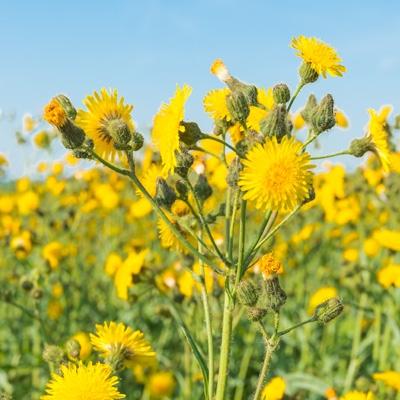
Perennial Sow Thistle—a noxious weed—was found at 19% of sites.

Timothy, which is cultivated as a crop in agricultural settings, was found at 29% of sites.
In this section, we summarize the occurrence and status of non-native vascular plants in Tolko’s Southern Operating Area.
Results
Status of Non-native Vascular Plants
The number of unique non-native vascular species found by the ABMI in Tolko's Southern Operating Area was:
Highlights
- Non-native vascular plants are relatively common in the Southern Operating Area, being detected at 52% of the surveyed sites. At these sites, an average of 3.5 non-native species were recorded.
- Common Dandelion was the most common non-native vascular plant, occurring at 48% of sites, followed by Timothy (29%) and then five species (Alsike Clover, Annual Hawk's Beard, Common Plantain, Creeping Thistle, and Perennial Sow Thistle) at 19% each.
- Six of the non-native species detected are listed as noxious weeds under Alberta’s Weed Control Act: Creeping Thistle (19%), Perennial Sow Thistle (19%), Scentless Chamomile (13%), Common Tansy (7%), Tall Buttercup (7%), and White Campion (3%). Other noxious weeds that have been detected in the Southern Operating Area include Canada Thistle, Oxeye Daisy, Tall Hawkweed, and White Cockle[4].
- Several of the non-native species that have been detected in the Southern Operating Area are cultivated as hay and forage crops in agricultural settings, including Timothy (29%), Alsike Clover (19%), White Clover (13%), Red Clover (10%), and Alfalfa (3%).

Common Dandelion was the most common non-native vascular plant detected.
References
Sanderson, L.A., J.A. McLaughlin, and P.M. Antunes. 2012. The last great forest: a review of the status of invasive species in the North American boreal forest. Forestry: an International Journal of Forest Research 85(3):329-340.
Foster, A.C., J.A. Wang, G.V. Frost, et al. 2022. Disturbances in North American boreal forest and Arctic tundra: impacts, interactions, and responses. Environmental Research Letters 17(11):113001.
Syed, O.A, V.M. Zhang, and P.M. Kotanen. 2023. Potential role of the seed bank in spreading invasive plants in a tundra-edge environment. Botany 101(6):193-199.
Tolko Industries Ltd., Vanderwell Contractors (1971) Ltd., and West Fraser Mills Ltd. 2021. Lesser Slave Lake regional forest management plan. Prepared by FORCORP Solutions Inc.



